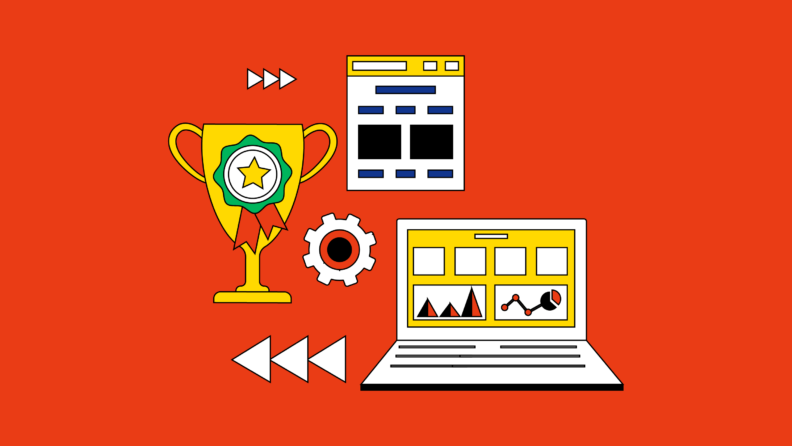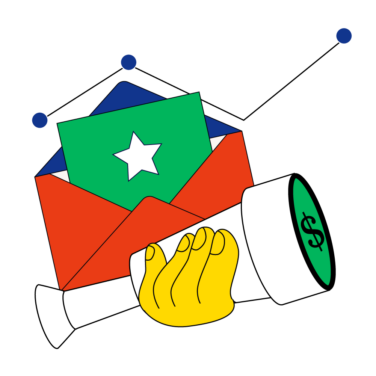Gamification in any industry is designed to ensure a person stays engaged and focused on a particular task until they reach their goal and receive their reward. You can use these strategies and tactics to motivate your sales team to strive for even better KPIs and ensure growth and success for the entire company.
If you want to learn more about the benefits of implementing sales gamification in your business, I have an overview that can help. Learn more about the psychology of gamification and the best practices for gamifying your workflow here.
What Is Sales Gamification?
Sales gamification is when you use game-like mechanics and elements to create a system of positive reinforcement for sales reps who perform to the best of their abilities. Some common gamification techniques include badges, leaderboards, competitions, points, and notifications. With real-time feedback that recognizes and rewards success, you’re reinforcing the behaviors you want from your sales team.
When using sales gamification in your environment, the key is to ignite your team’s competitive nature in order to accelerate sales performance. There are several different types of gamers to consider, including prize-chasers, socializers, and fun-seekers — which I will talk more about in the implementation portion of this blog.
Benefits Of Sales Gamification
So what are the benefits of sales gamification tools? Generally, they provide a change of pace from some of the more mundane and tedious portions of a salesperson’s job. Whether it’s cold calling, pitches, follow-ups, or onboarding, game mechanics can make a real difference in performance for your entire team.
Struggling with cold calls? Discover the top cold calling software to boost your sales game.
1. Making Boring Tasks More Fun
Every sales workflow has a few tasks that are the least enjoyable. While you can reduce manual processes through sales automation, there are probably a few essential sales activities everyone hates. By gamifying these tasks with rewards, you ensure teams continue doing them in a timely manner. You may even discover these responsibilities become more popular once they’re incentivized.
2. Ensuring Winning Sales Behaviors for Everyone
When you reward and recognize goal completion, you use gamification to show the entire sales department that it’s worthwhile to cross the finish line. You can prioritize different goals and metrics with incentives for whatever needs doing that week or that month. Team members will associate rewards and task completion with every success.
Just make sure the rewards are worthwhile, or your strategy may backfire. Some popular rewards include:
- Money
- Gift cards
- Time off
- Profit sharing
- Bonuses
Over time, you won’t need to reinforce their success with prizes as often because you’re naturalizing winning behaviors, ensuring they become the norm throughout your work environment.
3. Enhance Employee Retention
You probably have a few team members who always feel like they’re a few steps behind. Eventually, these sales professionals may stop trying because they don’t see outcomes for their efforts. You might end up letting them go, or they may leave on their own, forcing continuous sales training for new hires and slowing down your growth.
By creating a sense of healthy competition through sales contests, gamification works to re-engage them with your sales process and may even transform them into top performers.
Implementation Best Practices

Because there are so many types of salespeople, a lot of gamification strategies, and various gamification platforms, it can be tough to figure out how to proceed. Follow these best practices to ensure you get it right the first time.
1. Understanding Your Team
As I mentioned previously, there are several different types of personalities. You need to analyze each team member to understand what’s important to them. Knowing whether they prefer physical prizes, recognition, or the thrill of the chase will ensure you set appropriate goals and rewards. The most common gaming personalities include:
- Prize-chasers: These personalities want physical prizes so focus your tactics on real-world rewards, like gift cards and money.
- Socializers: These salespeople want everyone to hear about their success. Add gamification strategies for recognition to ensure employee engagement.
- Fun-seekers: These employees simply love the thrill of gaming. Create game mechanics that simulate puzzle-solving, quizzes, and other real-world elements.
Your team is likely made up of a combination of these, so some competitions may engage more people than others. Initial trial and error will show you the best ways to motivate most of your team.
2. Setting Clear Sales Goals and Milestones
A successful gamification strategy truly hinges on clear objectives for success. Whether you opt for short-term goals or long-term milestones, every friendly competition needs to be trackable, achievable, and inclusive of every team member.
You can involve reps in the goal-setting process and get their feedback on how high to set the bar for success and what types of rewards will incentivize them most.
3. Rewarding Behaviors Instead of Numbers
While a leaderboard or point system may be essential to tracking your gamification simulation, you should focus on rewarding winning behaviors — not necessarily the numbers.
For example, if your competition is based on generating and managing leads, specify that these should be qualified leads to ensure you don’t end up hurting productivity with a low-quality list.
4. Celebrating Success Together
Part of guaranteeing your competitions stay friendly means ensuring that even though rewards may go to individual people, you celebrate as a team. Regular meetings can provide a platform where everyone shares and recognizes the achievements and progress of every sales team member to continue encouraging engagement from every employee.
You can also target rewards for team metrics instead of individual competitions to focus on unifying your organization instead of creating an environment where everyone is only looking out for themselves.
5. Use Sales Gamification Software
Planning, creating, and implementing contests and rewards can be challenging without any framework. Gamification software automates many of these processes, with templates and real-time tracking. Your CRM will integrate with your sales gamification software for accurate, automated competitions.
What’s Next?

Finding the best sales gamification software for your organization can be tough when you don’t know where to start. So, I’ve put together a list of my top picks for you to explore. Check out the best ways to engage your team and train new hires with these tool summaries:
And if you’re looking for more advice, sign up for the RevOps newsletter to enjoy weekly insights from the experts.


